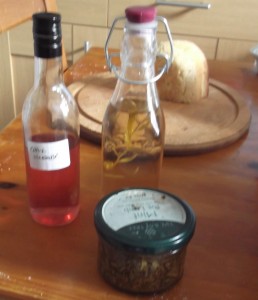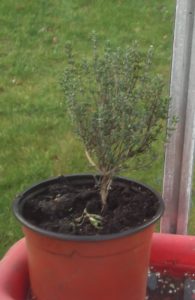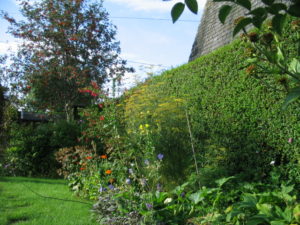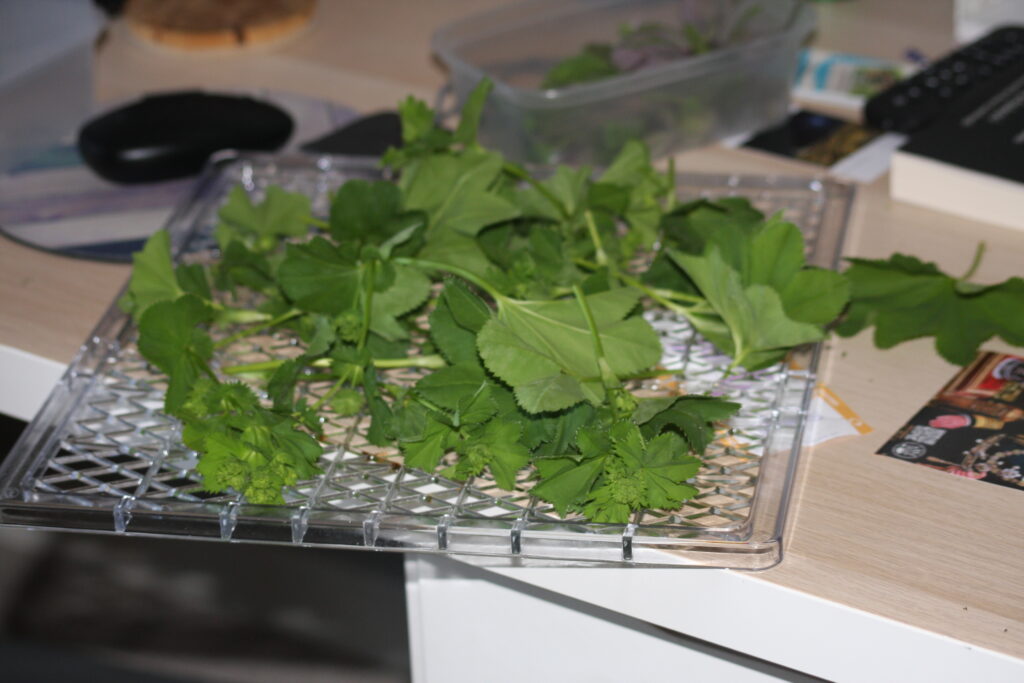
Everything greened up overnight. The alchemilla went from a tight nub of unfolding leaves to a whole clump of spreading leaf-fans and a fountain of emerging acid-yellow flowers. The thyme stretched five centimetres and put out purple buds. The broom bushes are fountains of gold and the hawthorns look like the last scene of Ghost Busters, with foamy cream coloured blossom sprayed everywhere.
Last year the weather was so cold and damp for so long I bought a dehydrator, but even so, drying herbs for the winter was long and tedious, and I had to have three or even four sessions for some things. This year was a very different story. I harvested thyme, alchemilla and purple sage in great quantities, and stuck everything in at once. And ten hours later, I had a lot of good quality herbs, with no wastage. I am very impressed.
The last few days of hot and sunny weather have done wonders for the seedlings. The tomatoes are in their final pots already, and and growing visibly. I’ve planted up some pots for the summer, with santolina and purple sage and lavender and bergamot, and I’ve planted out southernwood and mugwort into the garden. I had to clear a space for the mugwort in the magical border, which you might think has enough gallus herbs already, but I think it will cope. I am intrigued by this herb, as a great many people have been before me:
First, you are called, oldest of herbs.
You have the power · over three, over thirty.
You have power over venom, · over airborne infection.
You have power over the evil one · who wanders the world.
Lacnunga
Many people use it for magical purposes, to protect against evil, or to develop their feminine side, their sensitivity, or prophetic abilities. It is one of the large group of moon herbs, perhaps because of the silvery felted underside of its leaves, and Lucy Jones, the herbalist, says ‘If you find yourself travelling along (country) lanes by the light of the moon, you will notice that the silvery leaves of the Mugwort shine prominently…. if you have never noticed the appearance of Mugwort on a moonlit night, you have missed something special.’ In my garden it is just to the left of marshmallow, and in front of elecampane (also known as elf-wort), behind the ‘little wizard’ alchemilla, and not far from vervain and yarrow, so this is one powerful magical cocktail, if that’s your thing. I’m not sure if it’s mine, but I like the idea of the mugwort leaves at night, like Coleridge’s icicles, quietly shining to the quiet moon.
As well as herbs, I’m growing flowers for drying, statice, safflower, teasel and for seed heads, quaking grass, poppies and nicandra, which has papery twisted seed cases of a dramatic inky blue. Most of them are in the front garden, in the pollinator patch, but poppy and teasel rogue seedlings turn up everywhere, along with the delightful surprise of heartsease, which hitched a ride in the flower pots I brought with me. There isn’t much colour in my garden yet, but it’s lush with green. I can’t get enough of it.
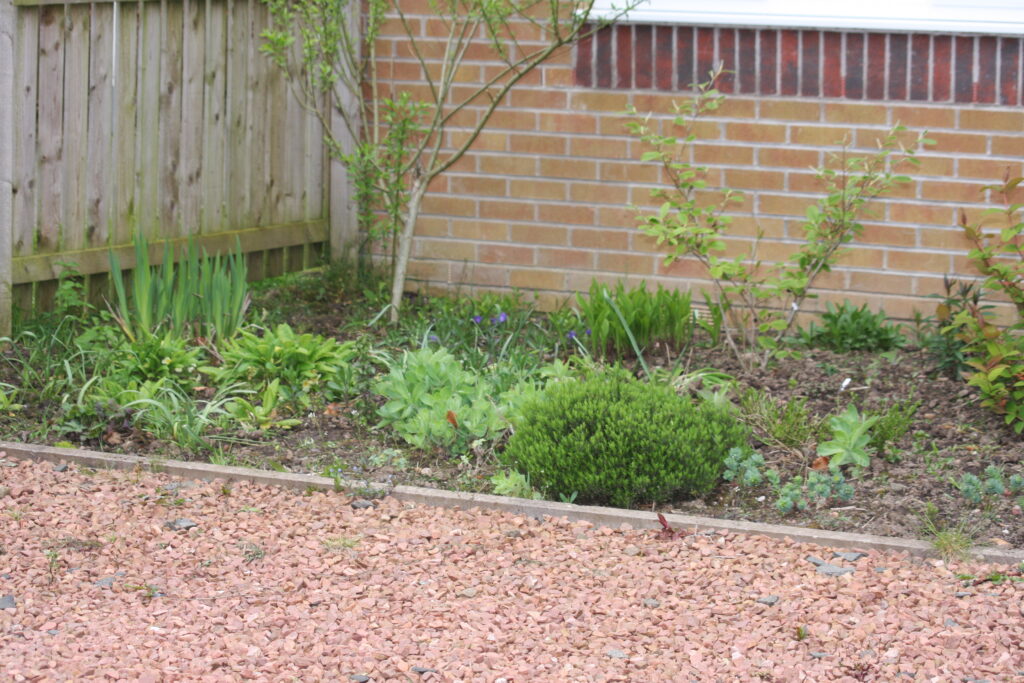







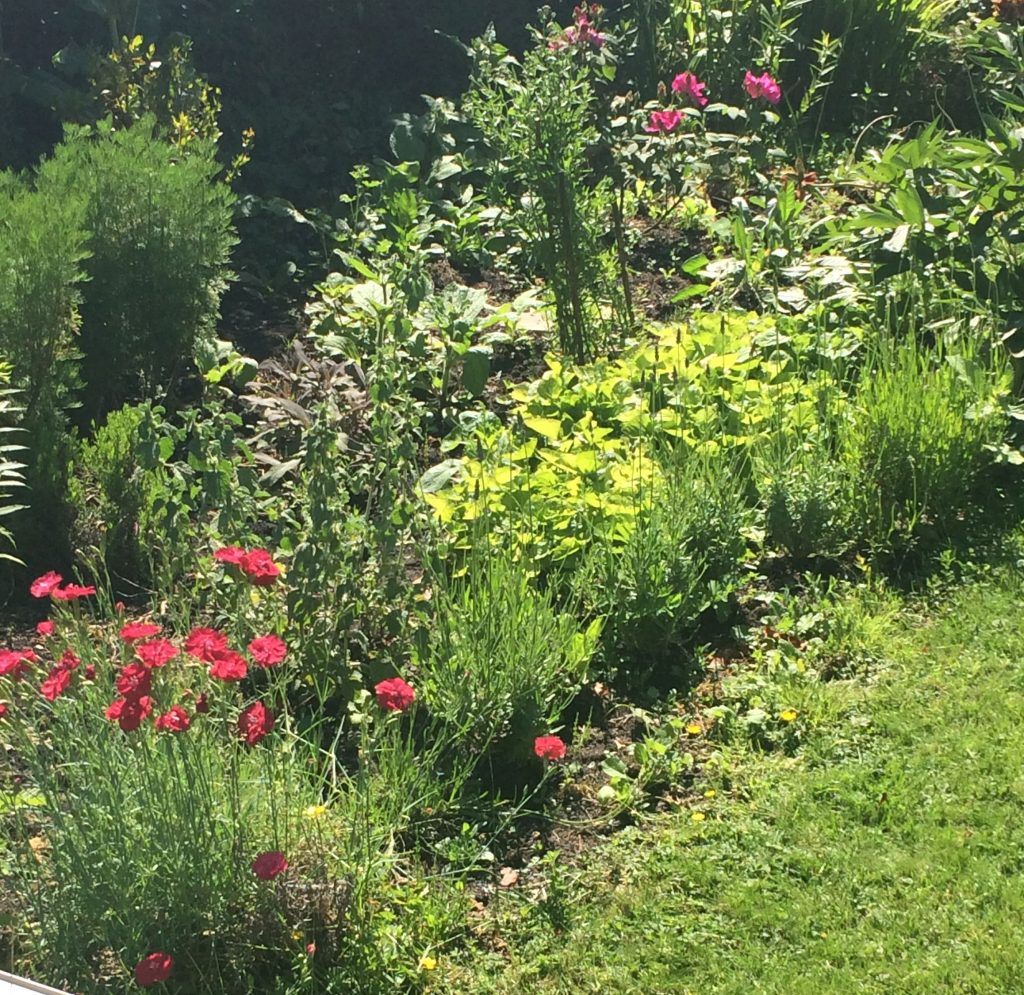
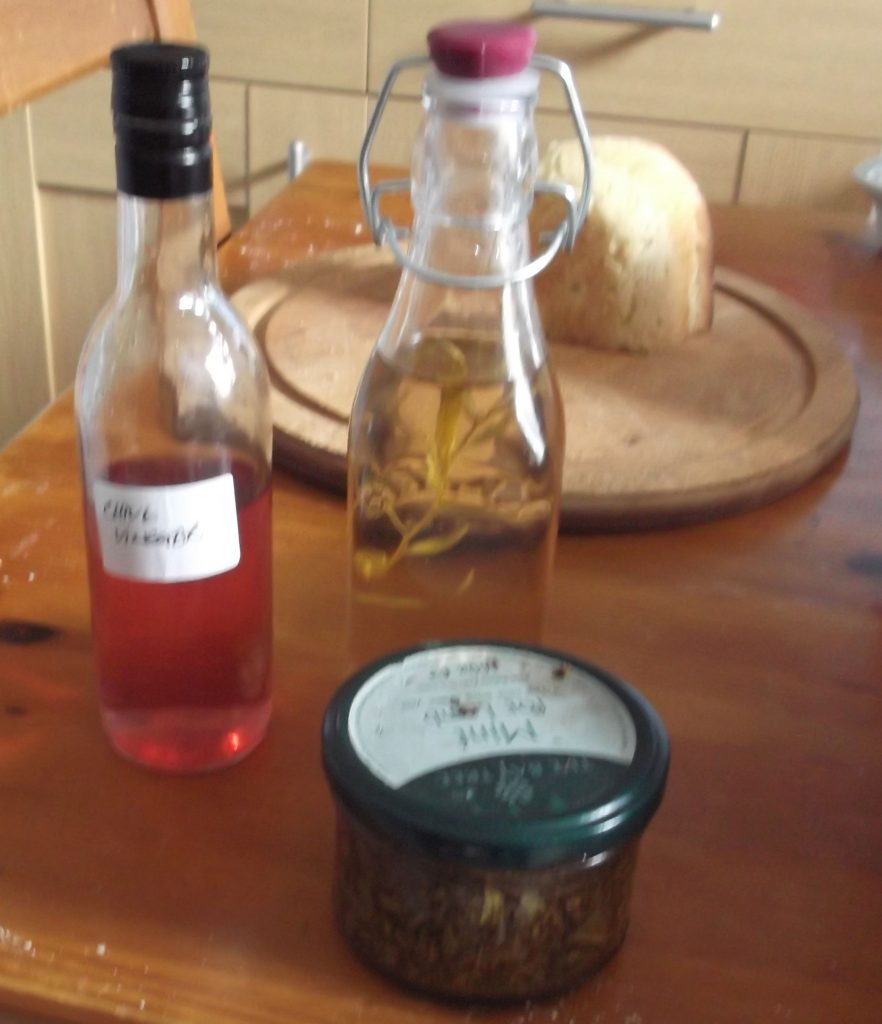
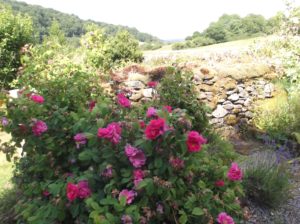
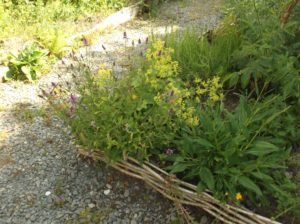
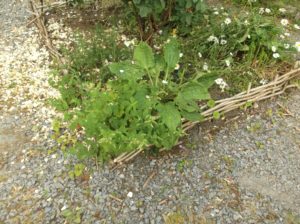
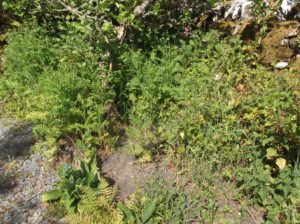
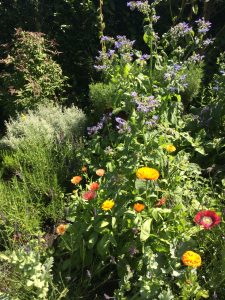
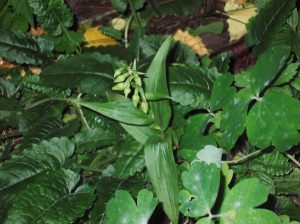
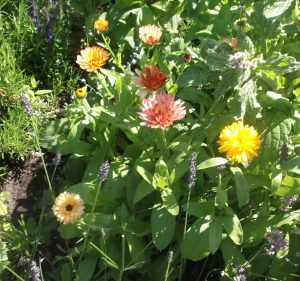
 When we visited the Kilmartin Museum, my first port of call was the lovely herb garden planted alongside the path. I had been struck by this last time I was there, because it seemed very different to a lot of recent constructions, which often come straight out of a picture book, without regard to climate or local tradition. This garden had a lot of local plants, mostly native, but not all – Highland herbalists were in touch with healing traditions all over the world, and were willing to import or try out new ideas. They were all well-grown and in good condition, and divided into beds according to their uses for healing, dyeing, cooking and fibre – including flax and nettle – and beautifully labelled and displayed.
When we visited the Kilmartin Museum, my first port of call was the lovely herb garden planted alongside the path. I had been struck by this last time I was there, because it seemed very different to a lot of recent constructions, which often come straight out of a picture book, without regard to climate or local tradition. This garden had a lot of local plants, mostly native, but not all – Highland herbalists were in touch with healing traditions all over the world, and were willing to import or try out new ideas. They were all well-grown and in good condition, and divided into beds according to their uses for healing, dyeing, cooking and fibre – including flax and nettle – and beautifully labelled and displayed.

